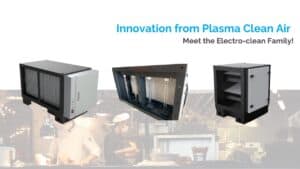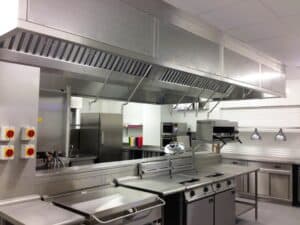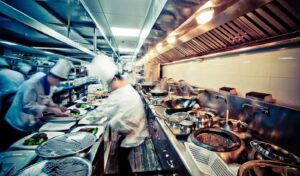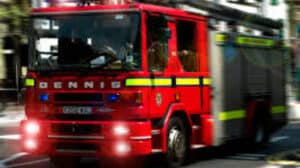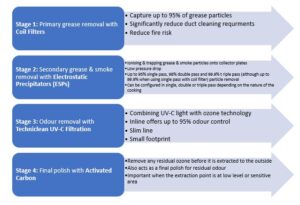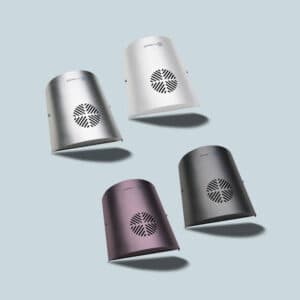
Recent advancements in technology have changed how we treat odours and grease in commercial kitchen ventilation.
Historically companies relied on carbon filtration, in combination with panel, bag and HEPA fine filtration methods, to treat odours and grease. Under current DW/172 guidelines carbon filters are ‘increasingly not accepted by Local Authorities as the primary means of odour control’.
What is being used now?
A combination of equipment, depending on the expected level of pollution, according to DW/172. These can include Ultraviolet Lamps (UV-C), Ozone injection systems, Electrostatic Precipitators and Activated Carbon Filters.
When should you use UV-C and ozone?
Electrostatic Precipitators (ESPs) are not a primary means of odour control. They provide reduction/treatment of particulate matter such as grease and smoke particles.
Where odour control is a key concern the choices should include UV-C and ozone systems. For complete solutions odour control is used with ESPs and/or carbon filters. For example, Plasma Clean offers a combined ESP/UV system. This provides grease, smoke and odour control in a single packaged unit.
It is important to place ozone injection or in-duct UVC after effective grease control. High efficiency canopy grease separators such as Coil Filters or an ESP. Otherwise the grease in the air stream quenches ozone or contaminates UVC lamps, reducing their performance.
What to check and look for when CHOOSING your UVC and ozone units:
- Is your ozone source free of NOx?
NOx is a pollutant. It mixes with water vapour in kitchen extraction systems producing nitric acid. This can rot the ductwork and fan.
- Are the ozone outputs per hour within safety regulation limits?
Low level discharge, or discharge close to a supply air intake, requires ozone control. We use specially formulated activated carbon. It is recommended to reduce ozone levels to below 0.1ppm at the extraction point.
- How many lamps per unit vs the stated ozone output?
Too few lamps will not provide sufficient odour control performance. High grease and odour applications will require more powerful odour control.
- Does the maximum capacity match the system flow rate?
If equipment is over or under sized for the flow rate, the unit will not be as effective. Also if the speed of the air through the system is too fast (over 9m/s usually) the ozone will not have time to react with the odour molecules.
Further Health and Safety Considerations
The Control of Artificial Optical Radiation at Work Regulations came into force on 27 April 2010 and aim to protect workers from the risks to health from hazardous sources of artificial optical radiation (AOR).
Ozone is a cleaning agent, it is also an irritant. Ultra-violet light in the C Band can damage the skin and eyes. Any manufacturer and supplier of ozone and UVC equipment should demonstrate awareness and understand of AOR, working with UV-C light as well as UK Health and Safety Executive Ozone Guidelines.
Best practice for USING your UVC and ozone equipment:
- INTERLOCK – ensure all systems are provided complete with interlocks. When no air flow or limited air flow is present the unit will not switch on.
Units should have, or be supplied with, an appropriate differential pressure switch:
- Prevents build-up of ozone when the extraction system is not running
- Stops surplus ozone coming into the kitchen (ozone is heavier than air).
- A fan run on ensures the extraction system is flushed through once ozone generating equipment is switched off
- Limits potential exposure to UVC. For example when a canopy filter is removed, canopy UVC system will automatically switch off.
*Plasma Clean have a range of interlock and advanced control panels available on request.
- Use good quality light guards to prevent exposure to UVC. Check using a UVC light meter during the commissioning phase – speak to us about this.
Positioning in system:
- Locate ozone injection systems early in the extraction system to maximise contact time – minimum of 2 seconds is recommended.
- For moderate to high levels of grease position the ozone or UVC system downstream of grease controls i.e. Coil Filters, Electrostatic Precipitators. [Ozone is quenched by grease and will be ineffective against odour if not properly protected. UVC lamps will become coated and therefore effectiveness reduced.]
- Check pressure resistance of grease and odour control systems vs fan capacity
- Use activated carbon to reduce ozone when used in low level extraction. (As per DW/172 Section 24.8)
- Finally, always locate grease, odour and smoke control system before the fan.
Plasma Clean offer consultancy services and site surveys. We’d be happy to help with any UV-C and odour control queries, system recommendations and commissioning visits. Get in touch with us today – 0161 870 2325.
